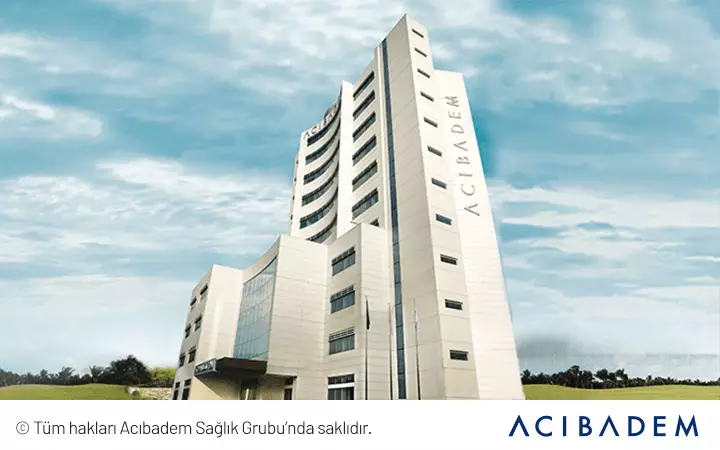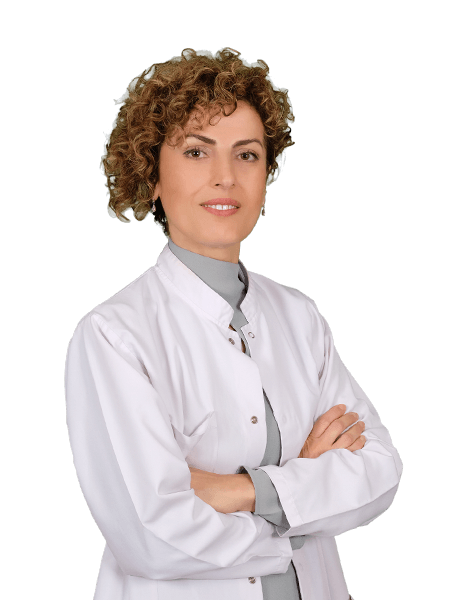Migraine is a disease that decreases quality of life and restricts activities of daily life. Pain is almost the most common symptom of this prevalent disease. The pain begins in posterior neck, temples or around the eye and movements may worsen the pain; it can be throbbing in nature and it can be accompanied by nausea, vomiting, photosensitivity and phonosensitivity.
Chronic migraine implies a condition characterized by headache episodes in more than fifteen days of a month within three months, each episode lasting longer than 4 hours and minimum 8 migraine-type headache episodes in a month.
Frequency, severity and other accompanying medical conditions should be taken into considered, when treatment is planned for migraine.
Medications used for treatment of migraine help relief of pain in headache episodes, stop accompanying symptoms, such as nausea and vomiting, or control frequency of headache episodes.
Botox is injected into subcutaneous tissue on 31 sites at forehead, bilateral temples, neck and shoulder for treatment of chronic migraine. Botox injection lasts approximately 5 to 10 minutes and administered by neurologists at hospital settings.
Migraine episodes usually start at 20 to 30 years of age, but headache episodes may develop in childhood or adolescence. A migraine episode may have four phases: Prodrome, aura, headache and postdrome. One does not have to go through all phases in each migraine episode.
Prodrome
Patients may recognize minor alarming changes one or two days before headaches begin:
- Constipation
- Mood swings, pessimism, restlessness
- Food craving
- Neck stiffness
- Sensation of dehydration and frequent urination
- Frequent yawning
Aura
Most patients experience aura-free episodes. Neurologic deficit is likely before or after headache in patients with aura. Migraine episodes with aura may lead to problems, including but not limited to weak tactile sensation, speech disorder, visual impairment, numbness or tingling.
Episode
An untreated migraine episode may last 4 to 72 hours, although interpersonal changes apply. Episodes may occur rarely or several times per month or week. Patients may experience throbbing (a sense of heartbeat at pain site), nausea and vomiting, photosensitivity, phonosensitivity and even sensitivity provoked by tactile sensation, blurred vision, dizziness and fainting in some cases during a migraine episode.
Postdrome (after the episode)
The patient may feel fatigued, exhausted and slightly relieved in postdrome phase (after the episode). Weakness, dizziness, restlessness and photo- and phono-sensitivity may be experienced within 24 hours after the episode.
When Should You See a Neurologist?
Since patients prefer to control headache with pain killers on their own discretion rather than seeing a neurologist, awareness on migraine is poor and therefore, the condition may be left untreated.
It would be best to record regular migraine episodes and symptoms, if you have them. If you think episodes and severity of your headache have changed, you should see a neurologist as soon as possible.
You should urgently see a physician, if any of the following symptoms has developed;
- Sudden and severe headaches like thunder.
- Fever, neck stiffness, confusion, double vision, numbness or impaired speech
- Worsened headache, especially following a head trauma
- Onset of headache following cough, exercise, sprain or sudden movements
- Recently-onset headache after 50 years of age,
Causes of Migraine
Genetic or environmental factors are known to play a role in migraine, although the exact cause is not yet known. Imbalance of chemicals in brain, including serotonin, is thought to cause the episodes.
Certain chemicals that trigger pain in membranes of brain (meninx) are secreted in migraine episodes, resulting in development of migraine-type headache. Calcitonin Gene Related Peptide (CGRP) is one of the crucial chemical mediators that play a role in migraine headache.
Triggers of Migraine
There are several elements which may trigger migraine episodes:
- Hormonal fluctuations in women facilitate onset of migraine episodes. Fluctuating estrogen may trigger headache in many women. Women with medical history of migraine may suffer from headache when estrogen level decreases before or after menstrual cycle. Pregnancy or pre-menopausal period may not only lead to onset of migraine, but it may also change the course of existing migraine episodes.
- Hormonal medications such as oral contraceptives and hormone replacement medication may worsen the course of migraine.
- Certain foods, such as aged cheese, salty or processed food, may trigger migraine. Aspartame, an artificial sweetener, and monosodium glutamate, a food preservative, which are found in many foods, are known to trigger migraine.
- Change in dietary habits, e.g. skipping meals or overeating, may facilitate development of migraine episodes.
- Migraine can also be triggered by beverages, including alcohol – especially wine – and highly caffeinated beverages.
- Stress plays an important role in migraine episodes. Stress at home or work may be the underlying cause of migraine episodes at frequent intervals.
- High sounds, bright lights or sunlight exposure may start a migraine episode. Certain smells, including perfumes, paint thinners and cigarette smoke, may trigger migraine.
- Changes in sleep pattern are among known triggers of migraine. Sleep deprivation, long hours of sleep, poor sleep quality, jet lag and other similar conditions may pave the way for or increase frequency of migraine episodes.
- Sexual activity or strenuous physical effort may lead to migraine episodes.
- Changes in air pressure or barometric parameters may trigger migraine.
- Medications, such as vasodilator agents (that dilate blood vessels, such as nitroglycerine) or oral contraceptives, may worsen migraine episodes.
Risk Factors
Factors that may increase the risk of migraine are listed below:
- A family member with migraine increases the risk of migraine.
- Migraine may develop at any age range. Hormonal changes in adolescence play a major role in development of migraine. However, migraine episodes usually emerge at age range of 20 to 30 years. Severity and frequency of migraine episodes may gradually decrease thereafter.
- Migraine is more common in women compared to men. Migraine is more prevalent in men during childhood, but incidence substantially increases in women compared to men in and after adolescence.
- A person with migraine may suffer from headache immediately before or after onset of menstrual period.
Character and incidence of migraine may change during pregnancy or menopause. Migraine generally disappears after menopause. Some women may complain that migraine episodes develop or worsen in pregnancy. On the other hand, many patients with migraine do not suffer from migraine episodes in pregnancy. However, migraine generally recurs after the delivery.
Potential Adverse Effects of Migraine
Sometimes, attempting to control migraine headache may lead to various problems;
- Gastrointestinal disorders: Some pain killers taken at high doses or for long term may cause gastrointestinal diseases, especially including abdominal pain, bleeding, gastritis and ulcer.
- Headache secondary medication overuse: Using prescribed or over-the-counter medications in high doses for more than 10 days a month within last three months may lead to severe medication overuse headache which persists indefinitely.
- Medication overuse headache occurs when the medicines lose their pain alleviating features and become the origin of headaches. This vicious cycle may lead to use of even more painkillers. However, this does not alleviate the pain, but makes the headache more chronic than they are.
- Serotonin syndrome: Serotonin syndrome is a rare condition characterized by potentially life-threatening exposure of body to serotonin. Serotonin syndromes require strict care and medication use under supervision of a doctor.
- Chronic migraine: Migraine episodes may become chronic. All people suffering from headache for 15 days or more in a month within last 3 months are recommended to visit a neurologist regarding chronic migraine.
- Status Migrainosus: Migraine episodes may persist 4 to 72 hours, if left untreated or undertreated. Status migrainosus implies severe migraine episodes that last longer than 3 days.
- Persistent aura without infarction (vascular occlusion): Temporary neurologic disorders, called aura, generally disappear after headaches start. However, aura may sometimes persist longer than a week, after headache disappears. MRI should be scanned to evaluate brain in case of persistent aura in order to rule out any tissue damage or any other problem in brain.
- Migrainosus infarction (occlusion of blood vessels in brain): It is recommended to visit a neurologist regarding a potential cerebrovascular occlusion, if aura persists longer than one hour. Your physician may order an imaging study for your brain in order to rule out brain a possible infarction or bleeding.
Diagnosis
Migraine is a clinical diagnosis. The condition can be diagnosed while patient is comprehensively evaluated and examined by a neurologist without any need of further examination. In case of atypical headache that does not comply with characteristics of migraine, a neurologist may consider certain examinations and tests to rule out other reasons.
Laboratory tests and radiology studies help exclusion of conditions that may also lead to headache.
Medications used for treatment of migraine help relief of pain in headache episodes, stop accompanying symptoms, such as nausea and vomiting, or control frequency of headache episodes. There are various medications used in treatment of migraine.
It is known that some medications, which are generally used for treatment of other diseases such as epilepsy, hypertension and depression, may also help prevention and alleviation of migraine. Also used for cosmetic procedures, Botox is among novel treatment modalities.
Given the assumption that Botox with well-known muscle relaxant features also affects certain chemicals, which induce pain, some studies suggest that this drug can also help migraine- and tension-type headache.
Botox therapy is particularly recommended for patients with long-standing headache who had no benefit from various treatment modalities and cannot tolerate side effects of drugs.
Medicines used in treatment of migraine are divided into two major categories:
Painkillers: These are used in migraine episodes to stop the pain.
Medicines used in preventive treatment: These medications are used every day regularly to reduce severity and frequency of migraine episodes.
Treatment strategy is dictated by frequency and severity of headache as well as other co-existing medical conditions.
Some medicines are inappropriate for pregnant or lactating patients due to potential adverse effects on fetal and infant health. Some medicines are contraindicated in children with migraine episodes. Your physician will recommend the most appropriate medicine for your migraine.
Given the assumption that Botox with well-known muscle relaxant features also affects certain chemicals, which induce pain, some studies suggest that this drug can also help migraine- and tension-type headache.
Botox therapy is particularly recommended for patients with long-standing headache who had no benefit from various treatment modalities and cannot tolerate side effects of drugs.
Botox in Treatment of Chronic Migraine
Chronic migraine can be clinically diagnosed by a neurologist in a clinical encounter, if certain criteria are met: patients should suffer from headache for at least 15 days a month within last three months; headache persists minimum 4 hours in a day; and migraine-type headache should develop in minimum eight days of a month.
Incidence of chronic migraine is 1.3 to 2.4% in general population and it is a serious health problem that limits activities of daily life, affects job performance and interferes with family life.
Usually, patients with chronic migraine try almost all medications recommended in migraine treatment guidelines, use painkillers constantly at significantly high doses due to failure to alleviate symptoms or lose their hope for medications and they are at risk of psychological disorders, as they have to cope with adverse psychological effects of severe headache.
A series of scientific research conducted in the U.S., called PREMT, has demonstrated that Botox therapy, which is commonly used for aesthetic purpose, is an effective solution for patients with chronic migraine. Following this scientific evidence, use of Botox injections for treatment of chronic migraine was approved in the U.S. and the U.K. in 2010 followed by Turkey in 2011.
How Does Botox Treat Pain in Chronic Migraine?
Botox blocks the chemical mediators that are produced in sensorial nerve endings and induce pain in patients with chronic migraine. As secretion of these chemical mediators or transmitters is suppressed, pain pathways cannot be activated that are extending from subcutaneous nerve endings to the central nervous system and thus, pain is suppressed, before the signal is transmitted to the brain.
How Is Botox Used For Chronic Migraine?
Botox is injected to chronic migraine patients in a standardized manner all around the world. This treatment modality is proven by a scientific research, called PREMT, to be effective to reduce frequency and severity of headache episodes in chronic migraine; Botulinum toxin is injected at constant dose of 5 units to each of 31 subcutaneous sites located in forehead, bilateral temples, neck and shoulder.
Botox injection lasts approximately 5 to 10 minutes. The injection is done by neurologist at the hospital. Following the injection, you are recommended not to bend your neck and not to rest in supine position for two hours to prevent spread of Botox. Patients with chronic migraine cannot take hot showers on the day of Botox injection. Effect of Botox therapy emerges within 4 to 10 days. Side effects are rare which include swelling, redness and tenderness. Cold compress can prevent swelling and pain, if it is applied during procedure. Weakness in upper eyelid or asymmetry in facial muscles is rare and temporary complications.
Positive Effects of Botox on Treatment of Chronic Migraine
Botox therapy can be considered for all patients with chronic migraine, except children and pregnant and lactating women. Studies have demonstrated that the treatment modality is effective in ¾ of chronic migraine patients.
For patients who do not achieve any reduction in frequency and severity of pain following the first Botox injection, it is recommended to give second and third chance and to try other approaches, if the third injection does not help the condition.
In treatment of chronic migraine, Botox is injected at three-month intervals in the first year. Injection intervals are planned specifically for the patient after a year.
Cold Weather and Migraine
Take measures before cold weather triggers your migraine episodes!
Migraine patients usually complain that weather changes trigger the pain. Although scientific studies on this issue do not clearly show a clear correlation between migraine and weather, they support the idea that a group of patients are affected by changes in weather.
Wind, storm, extremely shiny sunlight, high humidity and high pressure are known meteorological triggers.
It is not easy to protect ourselves from meteorological triggers:
- Keep a pain diary. Try to understand the conditions that trigger your pain
- Eat healthy, do not stay hungry
- Drink plenty of water
- Exercise regularly
- Do not miss your sleep rhythm; do not sleep for too long or too short
- Stay away from stressful environments
- If there are recommended treatments for migraine, do not ignore them
You cannot prevent rain or high air pressure. If possible, do not go outside in weathers that bother you. If it is too sunny, use hats and eyeglasses for protection.
Sometimes, pain is caused by a combination of more than one trigger. For example, if you are hungry or stressed in a windy day, risk of migraine headache increases.
If episodes occur more frequently, you should absolutely visit a Neurologist for treatment. Remember that taking too much painkillers not only harms your stomach and kidneys, but also shortens the intervals between headache episodes.
For long-term relapsing migraine, namely chronic migraine, Botox therapy has started to be used effectively.
Botox therapy is a scientifically-proven effective modality and it acts by blocking the chemical transmitters that induce the pain.
Migraine is a type of headache that can affect daily life of patients and restricts activities of daily life. It generally starts in nape, temples or around the eye and it may get worse with movement depending on the type of pain. The pain is mostly associated by photo- or phono-sensitivity, nausea and vomiting.
Patients’ request to sleep in a dark room or feeling of vomiting helps alleviation or cessation of migraine episode. Interpersonal variations apply to these episodes; for example, intermittent migraine episodes are called "episodic migraine”.
If the episodes occur for fifteen days or more in a month within sequential three months, the condition is called "chronic migraine”. Chronic migraine is generally associated by anxiety disorders, depression and sleep problems. Chronic migraine can cause serious health problems, if left untreated.
What is Migraine?
Many migraine episodes are “migraine without aura". Patients with migraine without aura also experience nausea, vomiting, photosensitivity, phonosensitivity and intolerance to smell. “Aura” may occur 5 minutes to 60 minutes before headache develops in patients who suffer from a migraine episode with aura.
Aura episodes are known as temporary neurologic disorder. In temporary neurologic disorders, patients experience both visual and sensorial (inability to find appropriate words, numbness or tingling etc.) effects. The most common one is visual aura. In visual aura, patients may see bright flashes or experience problems in visual field before the episode.
Medication treatments may help prevention of migraine and headache episodes. Minor lifestyle changes and accurate medication treatment will yield positive outcomes.
Hospitals
-
 Altunizade Hospital
Altunizade Hospital -
 Atakent Hospital
Atakent Hospital -
 Bakırköy Hospital
Bakırköy Hospital -
 Dr. Şinasi Can (Kadıköy) Hospital
Dr. Şinasi Can (Kadıköy) Hospital -
 Fulya Hospital
Fulya Hospital -
 Kozyatağı Hospital
Kozyatağı Hospital -
 Maslak Hospital
Maslak Hospital -
 Taksim Hospital
Taksim Hospital
Doctors
-
 Prof. AYŞE SAĞDUYU KOCAMAN, M.D.
Prof. AYŞE SAĞDUYU KOCAMAN, M.D.
-
 Prof. DİLAVER KAYA, M.D.
Prof. DİLAVER KAYA, M.D.
-
 Prof. ELİF ILGAZ AYDINLAR, M.D.
Prof. ELİF ILGAZ AYDINLAR, M.D.
-
 Prof. MURAT AKSU, M.D.
Prof. MURAT AKSU, M.D.
-
 Prof. ÖNDER US, M.D.
Prof. ÖNDER US, M.D.
-
 Prof. PINAR YALINAY DİKMEN, M.D.
Prof. PINAR YALINAY DİKMEN, M.D.
-
 Assoc. Prof. MUSTAFA EMİR TAVŞANLI, M.D.
Assoc. Prof. MUSTAFA EMİR TAVŞANLI, M.D.
-
 AYLA SİFOĞLU, M.D.
AYLA SİFOĞLU, M.D.
-
 BEYZA ÇİTÇİ, M.D.
BEYZA ÇİTÇİ, M.D.
-
 ELVAN CEVİZCİ AKKILIÇ, M.D.
ELVAN CEVİZCİ AKKILIÇ, M.D.
-
 HÜLYA ALTINTAŞ, M.D.
HÜLYA ALTINTAŞ, M.D.
-
 MÜGE KOÇAK, M.D.
MÜGE KOÇAK, M.D.
-
 NEBAHAT BİLİCİ, M.D.
NEBAHAT BİLİCİ, M.D.












